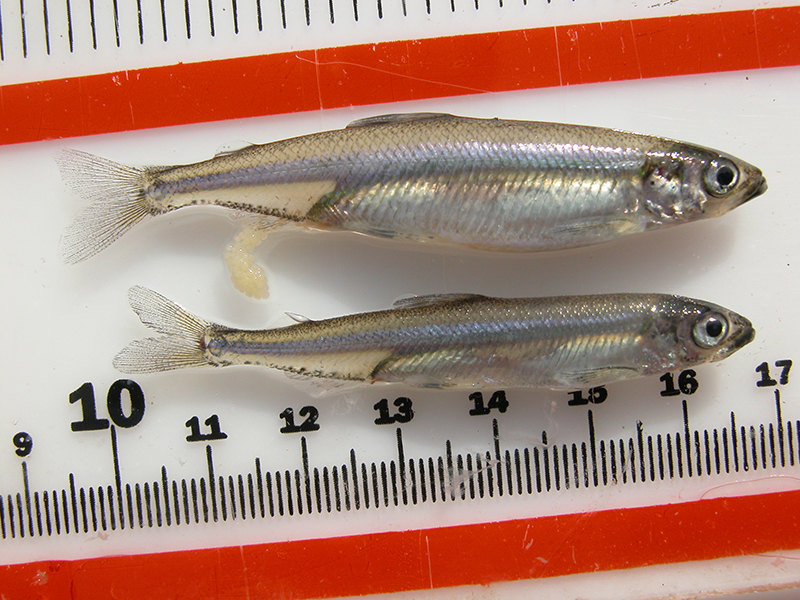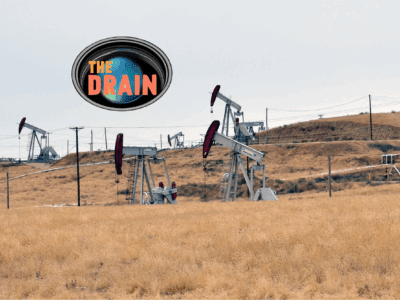It’s a Wonderful Law?
A thought experiment about the role of the ESA in California water management

[This post is co-authored by A. Dan Tarlock, Distguished Professor of Law, IIT Chicago-Kent College of Law.]
Remember the movie “It’s a Wonderful Life,” which shows up on TV every year at Christmas season? In it George Bailey, played by Jimmy Stewart, gets a great gift from Clarence, an angel-in-training who intervenes as George is contemplating suicide. Clarence shows George the world as it would be if George had never existed. It turns out that George has made a crucial difference in the lives of his family, friends, neighbors, indeed the entire community of Bedford Falls. Without George, Bedford Falls would be a less just, less prosperous, and less happy place.
There seems to be an analogous, though flipped, vision in some circles of the federal Endangered Species Act. The ESA, we constantly hear, produces “train wrecks,” blocking socially vital economic activity. In stark contrast to George Bailey, the story is that if only the ESA or the creatures it protects had never been born, the world would be a wonderful place.
Some California water users, and their friends in the Republican-led Congress, seem to see the relationship between the ESA and the state’s big water projects through this lens. They contemplate a “God squad” proceeding or a legislative exemption that would allow the State Water Project (SWP) and Central Valley Project (CVP), the linked systems that transfer vast quantities of water from the wetter north to the thirstier south through massive pumps in the Sacramento-San Joaquin Delta, to operate free of the ESA’s restrictions. They are no doubt thrilled by the recent news that the uncharismatic but endangered Delta smelt draws ever closer to extinction, thinking either that the smelt’s disappearance would itself free the pumps to send ever more water south to cities and farms or that its increasingly precarious status makes a political solution to the ESA problem less controversial.
So let’s assume the role of Clarence, the angel seeking to earn his wings, and take those eager souls to see the world as it would be without ESA protection for the Delta smelt (pictured above). But we have to do more than that to get at the impacts of the ESA. The smelt is not the only federally listed species in the system: the Central Valley spring-run chinook salmon, Sacramento River winter-run chinook salmon, Central Valley steelhead, and green sturgeon are also federally protected. For purposes of this thought experiment let’s take their protection away as well, so that we are in an imaginary world where the federal ESA no longer has any power over the Bay-Delta pumps or diversions from the Sacramento-San Joaquin River system. Would the problems of water users disappear?
In a word, no. In a few more words, the world without the ESA might even be worse for water users. They should be careful what they wish for.
Let us explain.
The most important point is that the ESA doesn’t control the weather. There is in fact a single overriding reason for the restrictions on diversions and project deliveries imposed in 2014 and anticipated for 2015: lack of precipitation. In a serious drought year, there is simply not enough water to satisfy all the demands on the system.
One recent study found that satisfying existing water rights in the Sacramento-San Joaquin would require roughly three times the average flow in the system. In such an over-appropriated system, drought years necessarily require cutbacks, even without any environmental restrictions.
According to federal regulators, the Fish and Wildlife Service, which is responsible for protection of the Delta smelt, “did not issue any determinations in water year 2014 that affected water operations,” and ESA requirements overall accounted for only 2% of the reduction in CVP deliveries last year. Nature (as, no doubt, modified by anthropogenic greenhouse gas emissions) is the root cause of California’s drought and the resulting water conflicts.
Turning to legal restrictions, the federal ESA is hardly the only environmental restriction on operation of the Bay-Delta water system, so taking it away would not leave the system unrestrained. As a matter of federal law, the Central Valley Project Improvement Act, which contemplates sustainable natural production of anadromous fish in Central Valley rivers and streams and dedicates 800,000 acre feet of Central Valley Project water to fish, wildlife, and habitat restoration, would remain. So would the San Joaquin River Restoration Settlement Act, intended to restore the lower San Joaquin as a living river capable of supporting native salmon. And so would the Clean Water Act, which requires that the state set water quality standards sufficient to protect all the uses of its waters, and which, as we have explained, has long been the most important legal driver of water project operations affecting the Bay-Delta.
In theory, Congress could repeal the CVPIA and the San Joaquin settlement act and exempt operations of the CVP from the Clean Water Act, but that’s extremely unlikely to happen.
Even if it did, plenty of restrictions would remain as a matter of California law. California Fish and Game Code section 5937 requires that dam owners allow sufficient water to pass to keep fish below their dam “in good condition.” A federal court ruled in 1992 that Section 5937 applied to operation of Friant Dam, setting the stage for the negotiations that eventually produced the San Joaquin settlement act. (Kerrigan Bork and co-authors have explained the history of section 5937 in detail.) California’s water quality law, the Porter-Cologne Act, requires water quality standards in much the same way that the Clean Water Act does, and the California courts have interpreted the Porter-Cologne Act broadly to require that water rights must be adjusted if necessary to achieve those standards. California has its own state Endangered Species Act, which protects the Delta smelt, winter-run chinook, and spring-run chinook. Finally, since the 1983 Mono Lake decision of the California Supreme Court, California has interpreted the public trust doctrine as protecting aquatic ecosystems. Mono Lake requires that public trust resources be protected to the extent feasible, even if that means reducing conflicting water rights.
The bottom line is that there’s no Jimmy Stewart moment to be had here. Listing of the Delta smelt or other federally protected species did not trigger the Bay-Delta water conflicts, which predate enactment of the federal ESA by decades. It should not be surprising that taking either the smelt or the ESA out of the equation will not magically end the conflicts. The conflicts began in the early 20th century when sugar refineries and cities became concerned about salinity intrusion into their Delta water sources. Engineered solutions such as the CVP, and institutional ones like the CALFED program have failed to live up to the promise of producing sufficient flows for all users.
The root problem, as the late Joe Sax pointed out, is that we have not yet found a fair mechanism for spreading the pain of needed limits on water use from the Sacramento-San Joaquin system. Taking the smelt out of the picture does nothing to address this long-standing problem.
Indeed, it could even make the problem worse, by exacerbating uncertainties and limiting the mechanisms available to address them. The ESA certainly has limitations, but it also has what is currently the only viable process for quantifying the extent to which diversions from the Sacramento-San Joaquin system can continue, consistent with protection of the ecosystem.
As law professors, we probably shouldn’t point this out. If there’s anyone who benefits from continued wrangling over the distribution of California’s limited water resources, it’s our past and future students and colleagues, the generations of lawyers who represent the competing interests. But if water users really want a durable resolution of the Bay-Delta problem they should be ready to confront the needed trade-offs, which the ESA can help us understand. We are not fans of the way the result so far of the Bay-Delta Conservation Plan process, which has drawn strong criticism from a National Research Council review committee. But we do believe an ESA-driven process, engaged forthrightly with careful attention to the best available scientific information, offers water users their best shot at a robust resolution.
There is no “It’s a Wonderful Life” solution to California’s water woes. No simple change to federal law will solve the state’s water problems because:
• The law cannot hold back global climate change, which seems likely to bring deeper and more frequent drought to the state.
• No single federal law drives environmental protection efforts in California’s water system; rather, there is a complex web of interconnected federal and state laws, many of which provide opportunities for legal challenges.
• Even if there were no environmental protection laws at the federal or state level, the baroque law of California water rights would provide plenty of opportunities for stakeholders to sue one another.
Attempts to demonize the ESA are an unhelpful distraction. Instead of focusing on that, water users should focus on how, once tools like the ESA identify needed limitations, the pain of those limitations can be fairly distributed.






Reader Comments